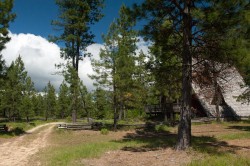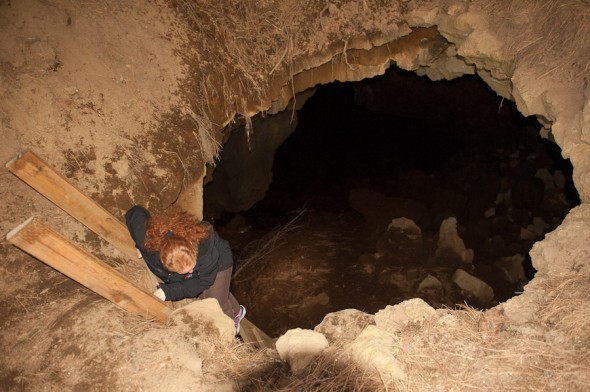My wife and I do something adventurous to celebrate her June birthday every year. However, she was knee-deep in final exams this time. We decided to reschedule our adventurous outing for the weekend following her finals, when we could both relax and enjoy the experience. Having lived in Trout Lake, we heard about the many lava tubes in the area, including the well known ice caves and cheese caves. Sadly, we had neglected to take advantage of these sights in our own backyard until now.
 These caves have an interesting history as they were used as a natural refrigerator in the 1930s and 1940s due to their 42 degree year-round temperature. The Guler Cheese Company was founded at a time when aged French bleu cheese was in short supply due to the political turmoil preceding World War II. The goal was to replicate the aging process used to make Roquefort cheese, using caves for storage and aging. The Pacific Northwest Cheese Project has an article that covers the history of the site and it’s definitely worth a read.
These caves have an interesting history as they were used as a natural refrigerator in the 1930s and 1940s due to their 42 degree year-round temperature. The Guler Cheese Company was founded at a time when aged French bleu cheese was in short supply due to the political turmoil preceding World War II. The goal was to replicate the aging process used to make Roquefort cheese, using caves for storage and aging. The Pacific Northwest Cheese Project has an article that covers the history of the site and it’s definitely worth a read.
Fast forward to the 1930s and 40s. At the time, American scientists were spending a lot of time scheming about how to replicate the blue cheeses of France that were no longer being imported into the United States due to political turmoil and World Wars in Europe. Can you see where this is going? An enterprising man named Homer Spencer put two and two together. Spencer, working in conjunction with the USDA, had the bright idea to develop the caves of Klickitat County into something resembling those at Roquefort, France.
The cave took us about a half hour to explore, an activity made much easier by the piercing beams of our Surefire flashlights. The typical features of lava tubes were present, such as flow ledges and lavacicles. The most interesting feature of this cave, however, was the remnants of the cheese shelves just below the ladder connecting the cave to the foundation of the Guler Cheese Factory. The staircase had been replaced with a metal version in the 1960s as indicated by a date carved into the foundation. We lingered here for a bit and shot some photos. I kept thinking this would be a great hideout in the event of a zombie apocalypse. 
We had just our on camera flash which had very little power to light the cavern. Instead we settled on a “painting with light” technique where we used our flashlights to highlight the cavern’s features during a long 3-5 second exposure. The result produced more dramatic lighting and better photographs.











